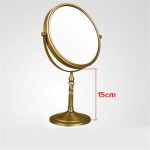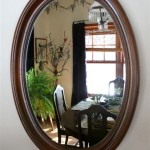How To Mirror Your MacBook Pro to a Sony Bravia TV
Mirroring a MacBook Pro screen to a Sony Bravia TV can significantly enhance viewing experiences, presentations, and overall productivity. Whether for streaming movies, sharing photos, or utilizing a larger display for work, the ability to seamlessly connect a MacBook Pro to a Sony Bravia TV is a valuable skill. There are several methods available to achieve this, ranging from wired connections to wireless solutions. This article provides a comprehensive guide on how to successfully mirror a MacBook Pro to a Sony Bravia TV, detailing the necessary steps, troubleshooting tips, and considerations for optimal performance.
Before initiating the mirroring process, it's crucial to understand the different technologies involved and their respective advantages and disadvantages. Wired connections typically offer a more stable and reliable connection, minimizing latency and ensuring a crisp image quality. Wireless solutions, on the other hand, provide greater flexibility and convenience, eliminating the need for cables and allowing for more dynamic arrangements. The selection of the appropriate method depends on individual needs, the available hardware, and the desired user experience.
Utilizing HDMI for Direct Connection
The most straightforward method for mirroring a MacBook Pro to a Sony Bravia TV involves the use of an HDMI (High-Definition Multimedia Interface) cable. This connection provides a direct, high-bandwidth link between the two devices, ensuring optimal picture and sound quality. The majority of MacBook Pro models feature an HDMI port, though older models may require an adapter if they possess only Mini DisplayPort or Thunderbolt ports. Sony Bravia TVs invariably come equipped with multiple HDMI inputs, allowing for flexible connectivity.
To initiate the HDMI connection, first, locate the HDMI port on both the MacBook Pro and the Sony Bravia TV. Connect one end of the HDMI cable to the MacBook Pro's HDMI port (or the appropriate adapter if needed) and the other end to an available HDMI port on the Sony Bravia TV. Note the HDMI port number on the TV as this will be necessary for selecting the correct input source.
Once the physical connection is established, power on both the MacBook Pro and the Sony Bravia TV. Using the Sony Bravia TV remote control, navigate to the input selection menu. This menu is typically accessed via a button labeled "Input," "Source," or similar. Select the HDMI input number corresponding to the port where the MacBook Pro is connected. After a brief delay, the MacBook Pro display should appear on the Sony Bravia TV screen.
The MacBook Pro often automatically detects the external display and mirrors the screen by default. However, if this does not occur, manual adjustments may be necessary. Navigate to System Preferences on the MacBook Pro by clicking the Apple icon in the top-left corner of the screen and selecting "System Preferences." Within System Preferences, locate and click on the "Displays" icon. This will open the display settings panel.
Within the Displays settings panel, there are several options for configuring the external display. If the screen is not already mirrored, locate the "Arrangement" tab. Within the Arrangement tab, there should be a checkbox labeled "Mirror Displays." Ensure that this checkbox is selected. This will enable screen mirroring, duplicating the MacBook Pro's display onto the Sony Bravia TV. If the goal is to extend the display rather than mirror it, leave the checkbox unchecked, which transforms the TV into a secondary monitor.
The Displays settings panel also allows adjusting the resolution of the external display. To ensure optimal picture clarity, it is generally recommended to set the resolution of the Sony Bravia TV to its native resolution, which is typically 1920x1080 (Full HD) or 3840x2160 (4K). Select the "Scaled" option and choose the appropriate resolution from the list of available resolutions. If the image appears distorted or stretched, try different resolutions until the picture quality is satisfactory.
For audio output, ensure that the sound is directed to the Sony Bravia TV. In System Preferences, navigate to the "Sound" icon. Within the Sound settings panel, select the "Output" tab. Choose the Sony Bravia TV from the list of available output devices. This will route the audio from the MacBook Pro to the TV's speakers. If the audio quality is poor, verify the HDMI cable is functioning correctly and that the TV's audio settings are properly configured.
Troubleshooting common issues related to HDMI connections often involves verifying the cable integrity. Ensure that the HDMI cable is securely connected to both devices and that it is not damaged. Try using a different HDMI cable to rule out a faulty cable as the cause of the problem. Also, check the Sony Bravia TV’s settings for any advanced HDMI options, such as HDMI Control (CEC), which sometimes can interfere with the connection. Disabling these features can sometimes resolve compatibility issues.
Leveraging Apple AirPlay for Wireless Mirroring
AirPlay is Apple's proprietary wireless streaming technology, allowing users to seamlessly mirror or extend the display of their Apple devices, including MacBook Pros, to compatible devices such as Apple TVs or, in some cases, directly to Smart TVs that support AirPlay 2. While older Sony Bravia TVs may not have native AirPlay 2 support, newer models typically do. Checking the specifications of the Sony Bravia TV is essential to determine its AirPlay compatibility.
First, ensure that both the MacBook Pro and the Sony Bravia TV are connected to the same Wi-Fi network. AirPlay relies on a stable and reliable Wi-Fi connection to function optimally. Navigate to the Wi-Fi settings on both devices and verify they are connected to the same network. A strong Wi-Fi signal is crucial for preventing buffering and ensuring a smooth streaming experience.
To initiate AirPlay mirroring, click on the Control Center icon in the menu bar of the MacBook Pro (it appears as two toggle switches). Within the Control Center, locate and click on the "Screen Mirroring" icon. A list of available AirPlay devices will appear. Select the Sony Bravia TV from the list. If prompted, enter the AirPlay code displayed on the TV screen into the MacBook Pro. This code is a security measure to prevent unauthorized access to the TV.
Once the connection is established, the MacBook Pro display will be mirrored to the Sony Bravia TV. The AirPlay icon in the menu bar will turn blue, indicating that screen mirroring is active. To adjust the display settings, such as resolution and scaling, navigate to the Displays settings panel in System Preferences, as described in the HDMI connection section. However, when using AirPlay, the available resolution options may be limited compared to a direct HDMI connection.
AirPlay also allows for streaming specific content, such as videos or music, without mirroring the entire screen. To stream content, simply open the desired application (e.g., QuickTime Player, iTunes) and look for the AirPlay icon within the application's interface. Click on the AirPlay icon and select the Sony Bravia TV as the destination. This will stream the content directly to the TV without mirroring the entire MacBook Pro display, allowing multitasking on the MacBook Pro while the content plays on the TV.
Troubleshooting AirPlay issues often involves verifying network connectivity. Ensure that both the MacBook Pro and the Sony Bravia TV have a strong and stable Wi-Fi connection. Restarting both devices can sometimes resolve connectivity problems. Also, check the Sony Bravia TV’s settings for any AirPlay-related options, such as requiring a password or restricting access to certain devices. In some cases, firmware updates for the TV or the MacBook Pro may be necessary to resolve compatibility issues.
Using Third-Party Screen Mirroring Applications
In situations where the Sony Bravia TV does not natively support AirPlay 2 or a direct HDMI connection is not feasible, third-party screen mirroring applications can provide an alternative solution. These applications typically work by installing software on both the MacBook Pro and the Sony Bravia TV (or a streaming device connected to the TV) and then establishing a wireless connection between the two devices. Several reputable screen mirroring applications are available, such as AirBeamTV, Reflector, and LetsView.
Before selecting a third-party screen mirroring application, research and compare the available options to ensure compatibility with both the MacBook Pro and the Sony Bravia TV (or the connected streaming device). Read user reviews and ratings to assess the application's performance, reliability, and ease of use. Some applications offer free trial periods, allowing to test the software before committing to a purchase.
The installation process for third-party screen mirroring applications typically involves downloading and installing software on the MacBook Pro and either downloading an app from the Sony Bravia TV's app store or installing software on a streaming device like a Roku or Amazon Fire TV Stick connected to the TV. Follow the instructions provided by the application developer for both installations.
Once the software is installed on both devices, launch the application on the MacBook Pro and the Sony Bravia TV (or the streaming device). The application on the MacBook Pro will typically scan for available devices on the network. Select the Sony Bravia TV (or the streaming device) from the list of available devices. The application may prompt for a confirmation code, which will be displayed on the TV screen. Enter the code on the MacBook Pro to establish the connection.
After a successful connection, the MacBook Pro display will be mirrored to the Sony Bravia TV. Many third-party screen mirroring applications offer additional features, such as the ability to adjust resolution, scaling, and audio output. Experiment with these settings to optimize the viewing experience. Some applications also support streaming specific content, similar to AirPlay, allowing for multitasking on the MacBook Pro while the content plays on the TV.
Troubleshooting issues with third-party screen mirroring applications often involves verifying network connectivity, ensuring that both devices are running the latest version of the software, and checking the application's settings for any configuration issues. Some applications may require specific firewall settings or port configurations to function correctly. Consult the application's documentation or support resources for troubleshooting assistance.

How To Mirror Mac Macbook Pro Sony Tv

How To Mirror Mac Macbook Pro Sony Tv

Screen Mirroring Mac Macbook To Sony Tv Airbeamtv

How To Screen Mirror Mac Sony Smart Tv Wirelessly Without Apple

How To Connect A Macbook Pro Or Air Tv Asurion

How To Connect A Macbook Tv With Pictures Wikihow

2024 How To Use Apple Airplay With Sony Smart Tvs

How To Mirror Screen Cast Your Laptop Sony Bravia Tv Via Wi Fi

Screen Mirroring Macbook To Sony Tv In 2024

Connect Mac To Sony Tv Effortless Screen Mirroring And Streaming Guide Gadgetmates








